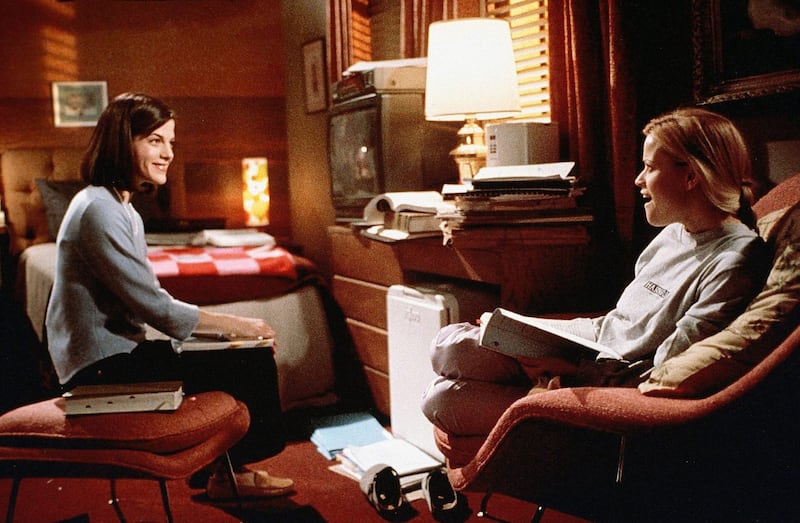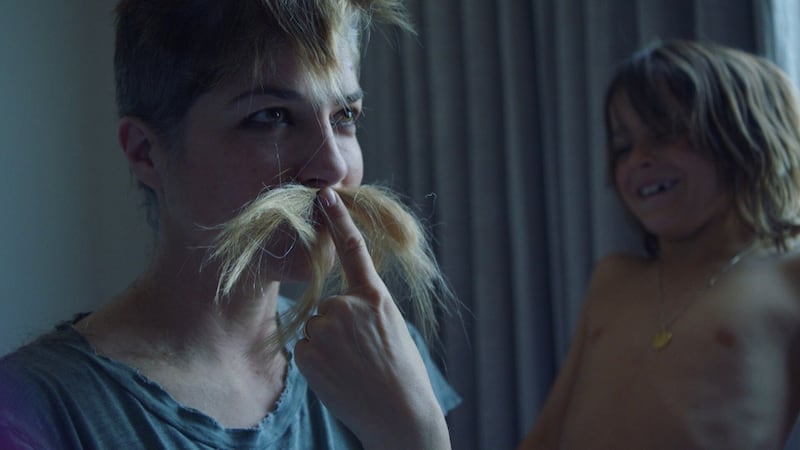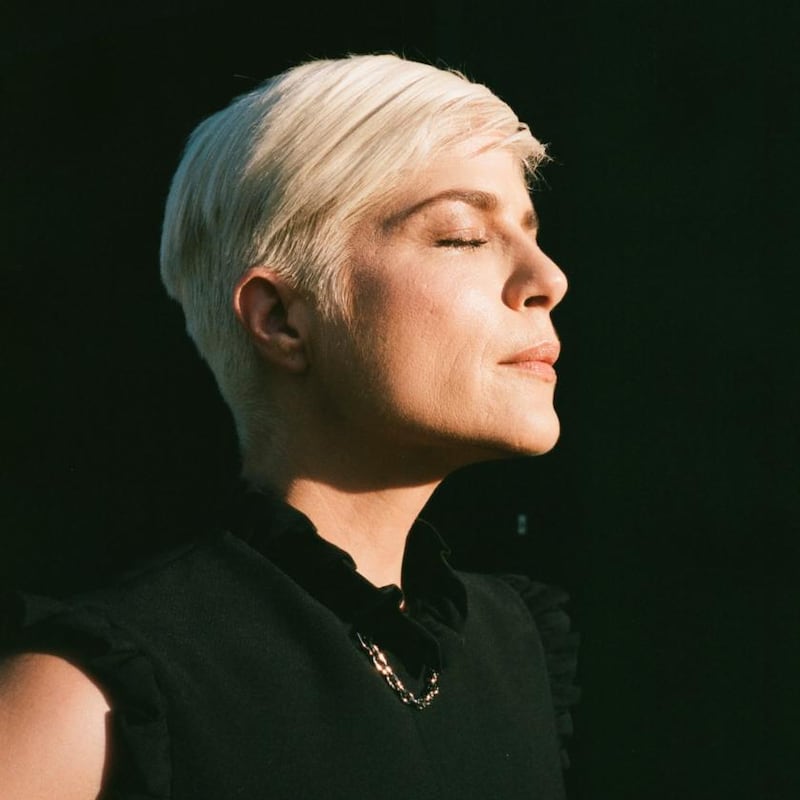Selma Blair could only talk for a half-hour in our first session. That was as long as she trusted her brain and her body to co-operate – any longer and she feared that her focus might start to wander or her speech might begin to trail. "We're being responsible in knowing that smaller moments will be clearer moments," she says.
For Blair, no day is free from the effects of multiple sclerosis, the autoimmune disease that she learned she had in 2018 but that she believes began attacking her central nervous system many years earlier. This particular Friday in September had started out especially tough. She says she woke up in her Los Angeles home feeling "just bad as all get out", but she found that talking with people helped alleviate her discomfort. Blair says she had good conversations earlier in the day and has been looking forward to ours. So, if she needs to take a break during this interview, she says with a delighted cackle, "it just means you're boring me."
This wasn't a vanity project at all – and I'm very capable of loving vanity
An unparalleled lack of inhibition has always defined Blair’s best-known work. She is 49, with a resumé that includes seminal works of teensploitation (Cruel Intentions), comedy (Legally Blonde) and comic-book adventure (Hellboy).
That same unbridled bluntness persists in all her interactions, whether scripted or spontaneous, with cameras on or off, even when she is sharing her account of the time she went on The Tonight Show wearing a strappy top she accidentally put on sideways. It is a story she tells me proudly, within five minutes of our introduction on a video call, while her fingers make a maelstrom of her close-cropped, bleached-blond hair. (By way of explaining this style choice, she bursts into a brassy, Ethel Merman-esque voice and sings, “I want to be a shiksa.”)

But Blair’s candour has come to mean something more in the three years since she went public about her MS diagnosis. Now, whether she is posting personal diaries on social media or appearing on a red carpet, she understands she is a representative with an opportunity to educate a wider audience about what she and others with MS are experiencing.
It is a philosophy of maximum openness that she is taking further by appearing as the subject of a new documentary, Introducing, Selma Blair. The film, directed by Rachel Fleit (and just released in US cinemas), is an unflinching account of Blair's life with multiple sclerosis and the stem-cell transplant she underwent to treat it in 2019.
As Blair explains, she is hopeful that the film will be meaningful to viewers who feel challenged and uncertain, whether or not they have a chronic illness. “This is my human condition,” she says, “and everyone has their own, but I think we are united in feeling alone or frightened when we have a big change in our lives. This wasn’t a vanity project at all – and I’m very capable of loving vanity.”

For Blair, the documentary is just one piece of a larger effort to understand herself – to determine how much of her identity has been shaped by her condition, and what will remain or change now that she is being treated for it. “If this had happened in my 20s, when I’m trying to start a career and set a few shekels aside, I would have been mortified,” she says. “I’m old enough now. I’m getting to know a whole different personality, and I’m not ashamed.”
Thinking back to her upbringing in suburban Michigan, Blair describes herself as a seven-year-old who toted around her own copy of the Physicians' Desk Reference, the massive tome of information on prescription drugs, and wondered why she experienced constant pain, fatigue and unpredictable mood swings.
These difficulties persisted into adulthood: the pain got worse, particularly after the birth of her son, Arthur, in 2011; she had problems with her vision and experienced involuntary muscle contractions in her neck. Until she received her diagnosis, Blair says, she couldn’t understand why her symptoms varied from setting to setting. “I can walk better in my house, but outside it’s like a sand pit,” she says. “With certain light, my speech becomes intermittent even though my larynx is fine. It never occurred to me that there’s a traffic jam that happens in my brain.”
In the flurry of attention that followed Blair's disclosure of her diagnosis, she was introduced to Fleit, and they agreed to start shooting the documentary in the days just before Blair travelled to Chicago for her stem-cell transplant. Fleit says Blair exercised no editorial control over the film, adding that the endeavour would succeed only if the actor "was willing to show the world what really happened – that brutal intimacy and honesty that you just don't see – and she was totally open to that".

Fleit, who has alopecia universalis, an autoimmune disease that causes hair loss, says she felt a particular connection to Blair as filming proceeded. “Being a bald lady in the world has given me unique access to a certain kind of emotional pain,” Fleit says. “It does not frighten me any more, and I feel uniquely qualified to hold the space for another person who’s experiencing that.”
To Parker Posey, a friend and colleague of Blair's for nearly 20 years, the decision to make a documentary was as much a legitimate form of expression as any other artistic enterprise. "This is the only thing we have – your life as an actor, it's all material, it's all story," Posey says. "Am I going to land in something that gives me meaning, away from the pettiness of most entertainment?" Posey adds. "Anyone who can find purpose in creating what they're supposed to create and bravely live their life, that's art. That's the triumph."
Blair says that once shooting started on the documentary, “I don’t think I noticed. There was really no directing, and I mean that in the best way.” She adds: “I don’t think I’ve realised that a film is coming out where I’m the subject of it. I haven’t really processed that.”
With our half-hour coming to its end, we say our goodbyes, and I tell Blair I look forward to reconnecting with her in a few days. In a comically ethereal voice, she answers: “God willing, if I’m alive.”
I don't know if I will ever work my way out of neurological damage
Our next session, planned for the following Monday, has to be delayed after Blair falls from a horse she was riding over the weekend. As she tells me in a follow-up conversation – this time over the phone, as video calls are making it difficult for her to focus – she had lost her balance and hyperextended her thumb but was otherwise doing okay.
She was more embarrassed by how she felt she’d behaved in our first conversation, using her admittedly outrageous sense of humour to paper over her anxiety. “I get so spooked, because there is still, even in my mind, a stigma of, you won’t bring it . . . you won’t be able to make this mind-body thing work,” she says. “I’ll use the defence of a shtick when I feel like I’m faltering.”
She is also bothered by a remark she has seen on her Instagram account from someone who is offering support for her documentary but says, as Blair describes the comment, "I wish a regular person were doing it, like a person that's not a celebrity, because it's not the same." Blair emphatically adds: "I am a regular person."

Blair says she has been told her MS is in remission, which she says means “there is not a clear path for my disease to get worse, and that’s huge. That gives you breathing room.” There is no certain timetable for how long her stem-cell transplant might be effective, but, as she says in her characteristic style, “I could get hit by a bus before that.”
One of the strange benefits of this period of relative calm is the chance to learn whether past behaviours that she considers fundamental components of her mood and personality – the outbursts, the impulsivity – might be manifestations of her condition.
Blair describes a conversation with a neurologist who asked if she took medication for pseudobulbar affect, a condition that can result in sudden uncontrollable laughing, crying or anger. “I said, ‘No, this is just me, what are you talking about?’” Blair recalls. “She’s, like, ‘Or maybe it’s not.’ It never occurred to me.” Blair adds: “I don’t know if I will ever work my way out of neurological damage. I know I can find new pathways, but I’ve been scarred for so long.”
She continues to help raise Arthur, whose custody she shares with his father, Jason Bleick, a fashion designer and her former boyfriend. But she says her son had not been able to watch all of the documentary. "About 20 minutes in, he wasn't comfortable," she says. "He was worried that people would see me this way and talk behind my back or not give me a job."

Blair says that she very much intends to keep working as an actor and that, to whatever extent she’s perceived as having stepped back from the industry, it’s not because she isn’t putting herself out there for roles. “The parts that I’m offered since I’ve had my diagnosis are the old woman, the person in the wheelchair, the person bumping into walls,” Blair says. “I might be those things, but I’m still everything else I was before, and I shouldn’t be relegated to that.”
But now that she has put herself out there in the truest way she knows how, Blair hopes that her efforts will remind others – and reinforce in herself – that there is value in this kind of transparency.
"There's a difference it can make to people," she says. "I don't mean it in a flaky, soft way. I mean, really make the time to go beyond, because you never know what people are holding inside, and what a relief to know even adorable people like me" – she cannot suppress one last knowing laugh – "are troubled by their own brains and bodies at times. That's the comfort I wish I could give." – This article originally appeared in The New York Times











